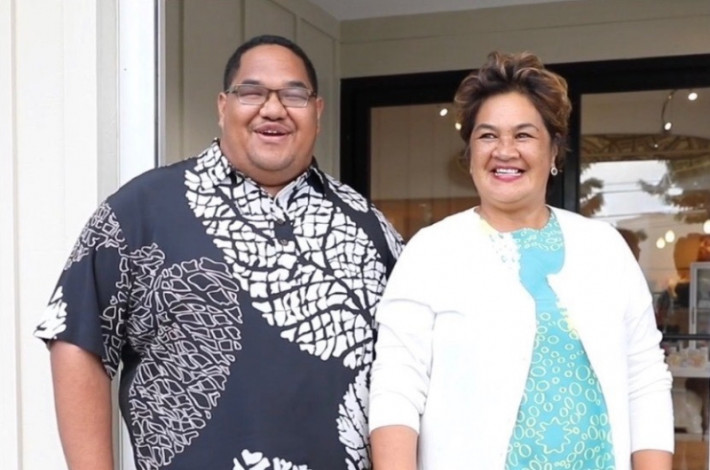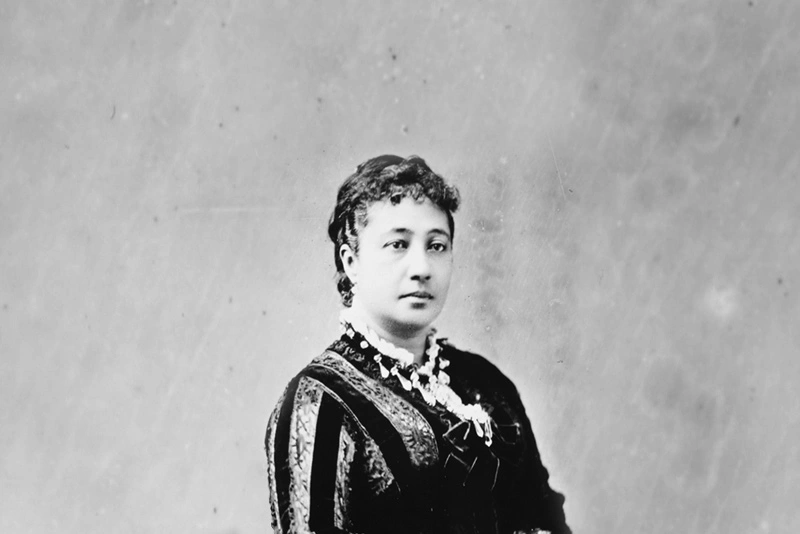This mo‘olelo is part of Kūkahekahe – Cultural Conversations – featuring personal experiences and insights from faculty, staff and friends about compelling cultural happenings within the KS organization, throughout the Hawaiian Islands, and across the larger Pacific and global communities.
Kamehameha Schools Kapālama kumu ʻōlelo Hawaiʻi Kahanuola Solatorio KSK’10 has amassed a global social media following of his ‘ōlelo Hawai‘i language-learning resource, “E Ho‘opili Mai” (Repeat After Me) available on Instagram, Facebook, YouTube, and most recently through Google Classroom.
His number of followers over the past year grew from a few hundred to more than 11,000 learners on Instagram alone, likely due to his ability to translate Hawaiian lessons into simple, humorous and heartfelt online interactions. Although Solatorio is a KS Hawaiian language kumu, “E Hoʻopili Mai” is not a KS project. Rather, these lessons are the product of Solatorio’s generous heart and love of ʻōlelo Hawaiʻi.
“E Hoʻopili Mai” had humble beginnings. Kahanu and his mother, Auntie Cappy Solatorio – known as “Student Cousin Cappy” to online learners – would walk together every morning. According to Solatorio, she is naturally funny, as well as a little bit sassy and spunky.
One day, he started to take videos of their walk-time conversations and asked her to say simple phrases in Hawaiian, like “ʻO wai kou inoa,” and “No hea mai ʻoe.” When he posted the videos to his personal Instagram account, friends encouraged him to do more, and soon others – even those his didn’t know – were following him.
What’s extraordinary about “E Hoʻopili mai” is Solatorio’s global reach and diverse set of haumāna. The student body of this virtual kula (school) includes K-12 haumāna, college students, mākua and kūpuna. People in Hawaiʻi and outside of Hawaiʻi are engaging too – with students who hail from Mexico, the continental U.S., and as far away as Spain!
The global shutdowns and the pandemic paused “E Hoʻopili Mai” in April 2020. When Solatorio was ready to come back in September 2020, he decided to start fresh. He created structured, polished weekly lessons using Google Classroom. Each week, he uploads a new haʻawina (lesson), based on a theme, introducing new vocabulary and sentence structures, but also reviews what has been covered in past lessons. He also makes a point of using other Hawaiian language resources, such as the ʻŌiwi TV web series “Ka Leo ʻŌiwi.” When learners sign up for “E Hoʻopili Mai” on Google Classroom, they have access to the entire course and can complete lessons at their own pace.
The scale of “E Hoʻopili Mai” is phenomenal; each Google class holds 240 students, and Solatorio is up to six classes, with over 1,400 students enrolled. He notes that he reviews lots of haʻawina and interacts with many haumāna, but has a special fondness for a particular group.
“I love the kūpuna,” Solatorio said. “I do help them a little bit more; some of them haven’t even used technology like this before. But every week, they are all gung ho! I might be a few minutes late sending the lesson, with my finger hovering over the button to push ‘send’ and I’ll get messages from them reminding me that I’m supposed to upload the haʻawina. That’s the ʻeleu (excitement, energy) I love to see.”
While it would be easy to burnout from all the extra work he has taken on, the shift to digital learning has been rewarding and allowed Solatorio to reach so many more haumāna, as well as create and share resources more easily.
“Because ʻōlelo resources can take so much personal time to create, a lot of kumu were hesitant to share their resources widely in the past,” he said. “One of my units is around 30 pages, and it can take me about 2-3 hours because I want it to be professional and user-friendly. I want to share these materials, and I love it when kumu ask me if they can use it in their classrooms. I don’t get paid to do this and I don’t let people sell my lessons because for me, it’s the satisfaction of having people learn our ʻōlelo.”
Above all, it’s easy to see that pilina, connection, is one of the underpinnings of “E Hoʻopili Mai,” and that has created ripple effects in our communities. Through his account, Solatorio has actively sought to kākoʻo (support) other Hawaiʻi-based and Native Hawaiian artists, content producers, and organizations collaborating frequently.
A recent campaign sought to help ʻAha Pūnana Leo and raised over $1,500. In one case, popular stationary maker Kea Peters (KSK’07) of Kākou Collective began following “E Hoʻopili Mai,” which inspired her to make more stationary using ʻōlelo Hawaiʻi. She gifted Solatorio with free designs to use in his classes as a mahalo. Other individuals from Rapa Nui and Japan were inspired to create their own “E Hoʻopili Mai” classes in their languages for aspiring learners.
The pilina that particularly resonates with haumāna is the teasing mother and son dynamic. “She is constantly recognized, and she’s like a celebrity already. Hello! I do the curriculum! I’m the kumu!” Solatorio joked. “Mostly, I’m lucky to have known her my whole life, and now people know her too. We are a team.”
Solatorio’s teaching philosophy and the mole (root) grounding “E Hoʻopili Mai” is simple, yet profound: “Aʻa i ka ʻōlelo” (Dare to speak).
“Sometimes people can get turned off by ʻōlelo because they get judged or shamed,” he said. “I want all people to be comfortable speaking the language they should speak in Hawaiʻi, whether they are Hawaiian or not. No shame, just go! We will correct but lovingly and with good intentions, so that you learn.”
One of the most rewarding aspects for Solatorio has been following in the footsteps of his five ʻōlelo Hawaiʻi pillars and mentors, each of whom found ways to foster ʻōlelo and bring them to new mediums, ensuring its survival.
“Princess Keʻelikōlani – ua ʻōlelo Hawaiʻi wale nō (she would only speak Hawaiian), Mary Kawena Pukui worked on all her books, Larry Kimura KSK’64 had the radio with “Ka Leo Hawaiʻi,” mānaleo Auntie Lōlena Nichols is just a queen, and ʻEkela Kaniʻaupiʻo Crozier had Kulāiwi on television. My main resource now is Instagram.”
“E Hoʻopili Mai” started the new year off with several ʻōlelo Hawaiʻi challenges and commitments, including Huaʻōlelo o Ka Lā (Word of the Day), ʻōlelo noʻeau (wise sayings) and more.
“Everything is just pushing me forward; I’m rich in my language and my relationships,” Solatorio said. “If only one person speaks after my lessons, then ola ka ʻōlelo Hawaiʻi, (the Hawaiian language lives)!”
FOLLOW “E HO‘OPILI MAI!”
Join Solatorio’s team of ‘ōlelo Hawai‘i haumāna by following “E Hoʻopili Mai” on on Instagram, Facebook and YouTube. To take Hawaiian language lessons at your own pace, use your personal Gmail account to access “E Ho‘opili Mai” classes through Google Classroom.
Following is kumu Kahanuola Solatorio’s “E Hoʻopili Mai” New Year’s Eve Instagram post in which he shares his 2021 goals with his followers. He then asks: He aha kāu mau pahuhopu ‘ōlelo Hawaiʻi no kēia makahiki hou? (What are your Hawaiian language goals for this new year?)
View this post on Instagram
A post shared by Kumu Kahanuola Solatorio (@ehoopilimai)

KSK kumu ‘ōlelo Hawai‘i Kahanuola Solatorio and his mother/sidekick – Auntie Cappy Solatorio, known to his social media followers and haumāna as “Student Cousin Cappy.”
TAGS
'ōlelo hawaii,hawaiian language,culture-based education,employee 'ohana,ks kapalama
CATEGORIES
Kaipuolono Article, Themes, Culture, Employee ‘Ohana, Newsroom, Kapalama, Alumni, Kapalama, News Briefs
Print with photos
Print text only










